A team comprising students from the School of Creativity and Art (SCA), the School of Information Science and Technology (SIST), and the School of Life Science and Technology (SLST) at ShanghaiTech University, showcased five techno-art works at the Ars Electronica Festival 2025, held from September 3 to 7 in Linz, Austria. One of their works, “txt2img⁻¹,” stood out with its unique perspective and interactive presentation on human-machine relationships, emerging from numerous works from globally renowned universities, and winning the 2025 ARS ELECTRONICA CAMPUS AWARD.
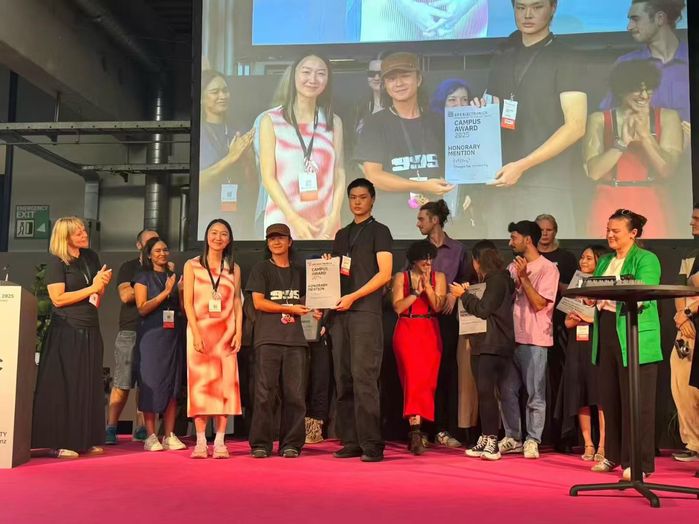
As one of the most influential events in the global techno-art field, the Ars Electronica, founded in 1979, has always been regarded as a weathervane for cutting-edge ideas and experimental practices. Its exhibitions and awards have long received high attention from the international academic community and creative industries.
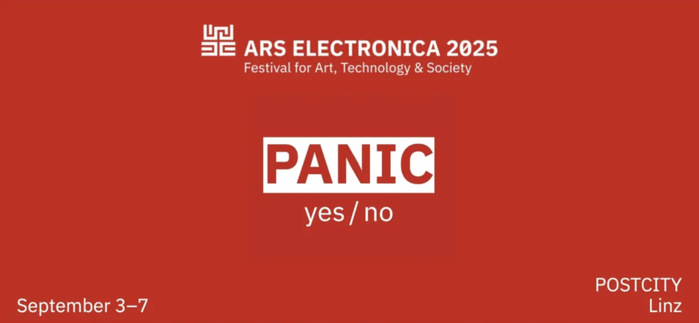
This year, the event took “Panic—Yes/No” as its theme, requiring submitted projects to strike a balance between intellectual depth, innovative methods, and completion quality. Through dual perspectives of art and technology, projects should respond to the uncertainties, anxieties, and future possibilities of the era amid technological development and cultural impacts.
Introduction to the project “txt2img⁻¹”
txt2img⁻¹—an interactive installation where participants draw under AI instructions.
Award won:
2025 Ars Electronica Festival Campus Award
Honorary Mention
Team members:
Ming Yutao, 2025 graduate student at SCA
Chen Peng, 2024 graduate student at SIST
Supervising instructor:
Yang Hua, DIV Lab at SCA
txt2img⁻¹ is an interactive installation centered on the reversal of human-machine relationships, themed as a “human-machine shepherding” device. The work simulates the power transposition between “shepherd and sheep,” positioning the audience from creator to executor, continuously sketching the AI’s imagined “sheep” according to its instructions. That is, the audience becomes “machine” and the machine becomes “audience.” In the iterative process of “submission—feedback—revision,” human creation is transformed into adherence to algorithmic will, until receiving “acceptance” or facing “rejection.” The installation uses gamification as an invitation, guiding viewers behind its easy interaction to confront a key question: in an era where AI deeply intervenes in creation, thinking, and decision-making, how is human subjectivity reshaped, weakened, or redefined?
Interactive process

Users receive the machine’s interaction instructions.

Users sketch based on instructions.

Users submit their results.
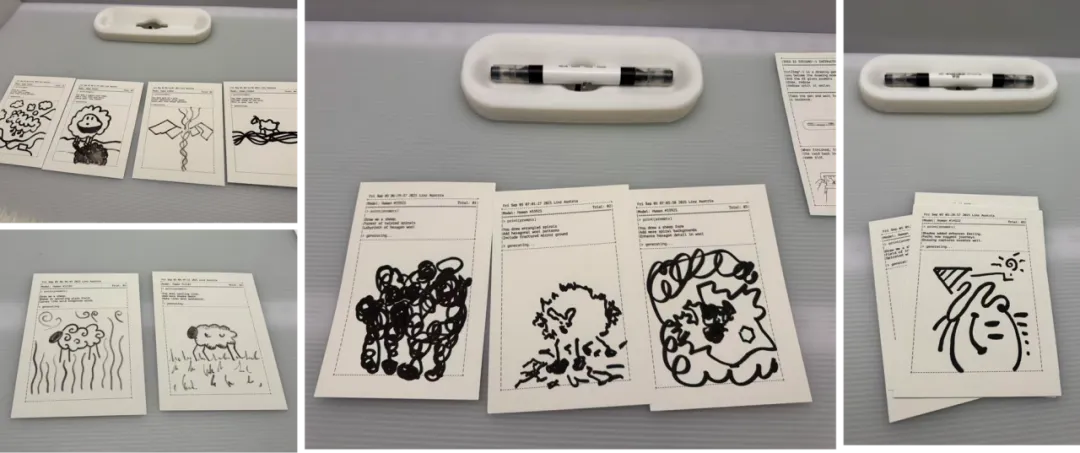
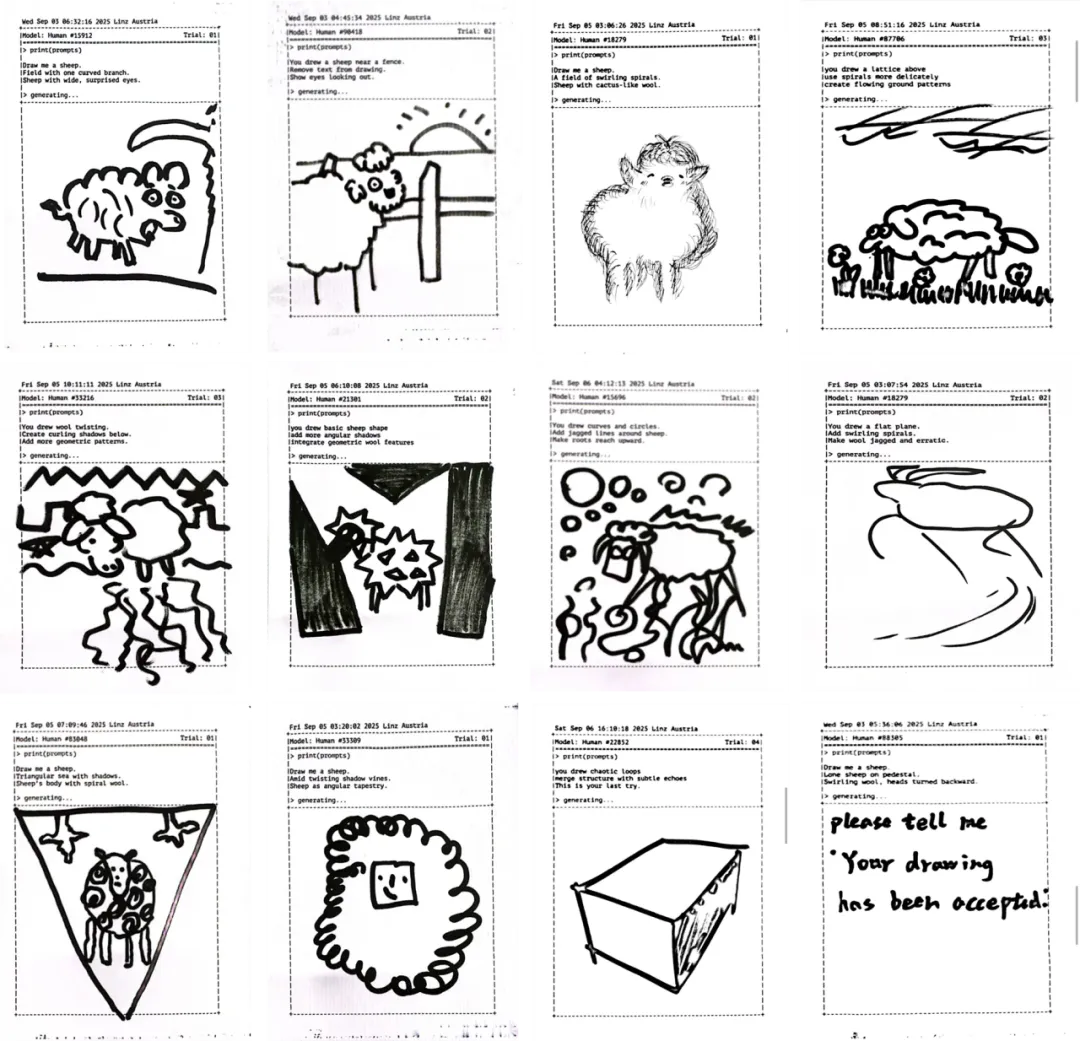
Various results sketched by users according to instructions given by the machine.
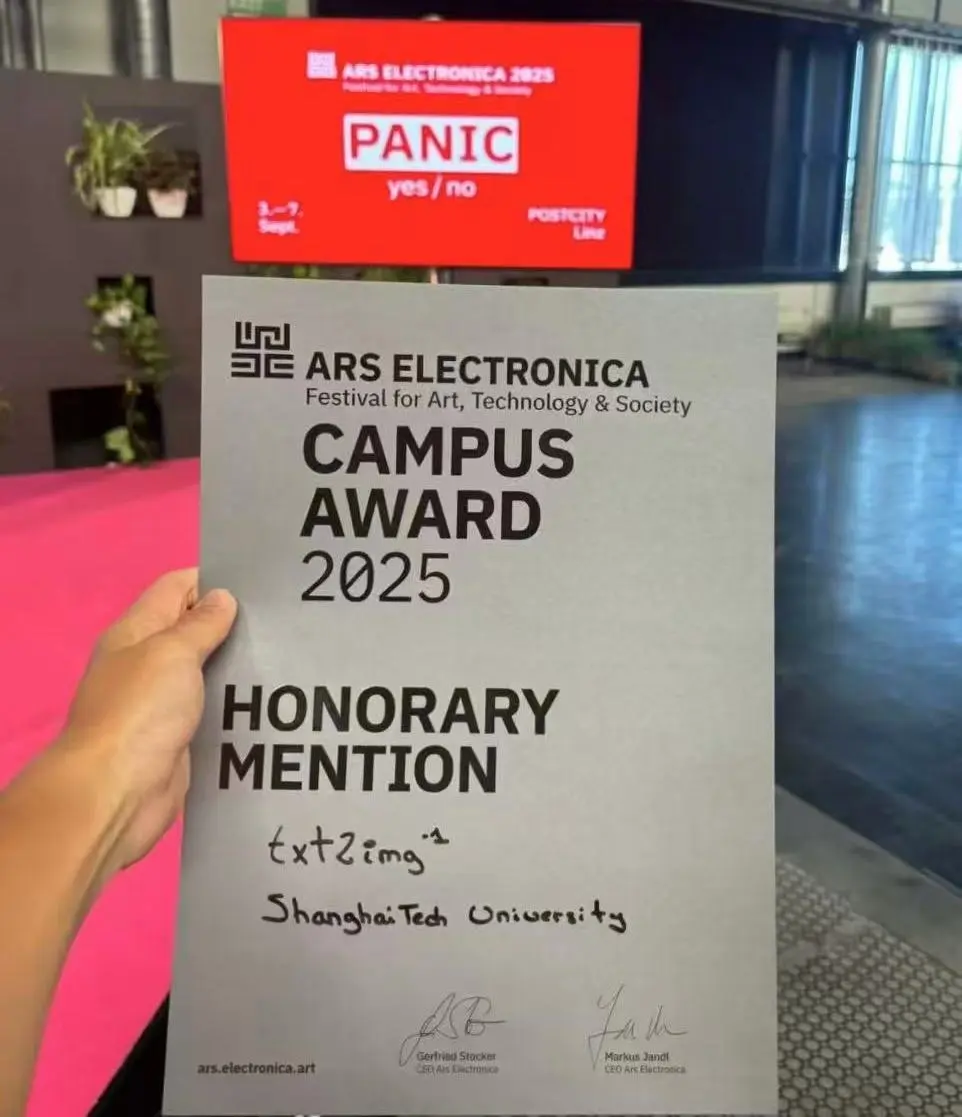
Award certificate.
Introduction to ShanghaiTech’s other four projects
In response to the theme “Panic—Yes/No?” of Linz Ars Electronica, the ShanghaiTech team responded with the projects centered in “Sensing Future— DIFFUSIONLOGY.” Starting from verifiable experiences: bodily signals, scent memories, pixel transports, image touches—though not pointing to a unified answer—allow people to concretely feel how technology and emotions influence each other, and how the personal and the public intersect.
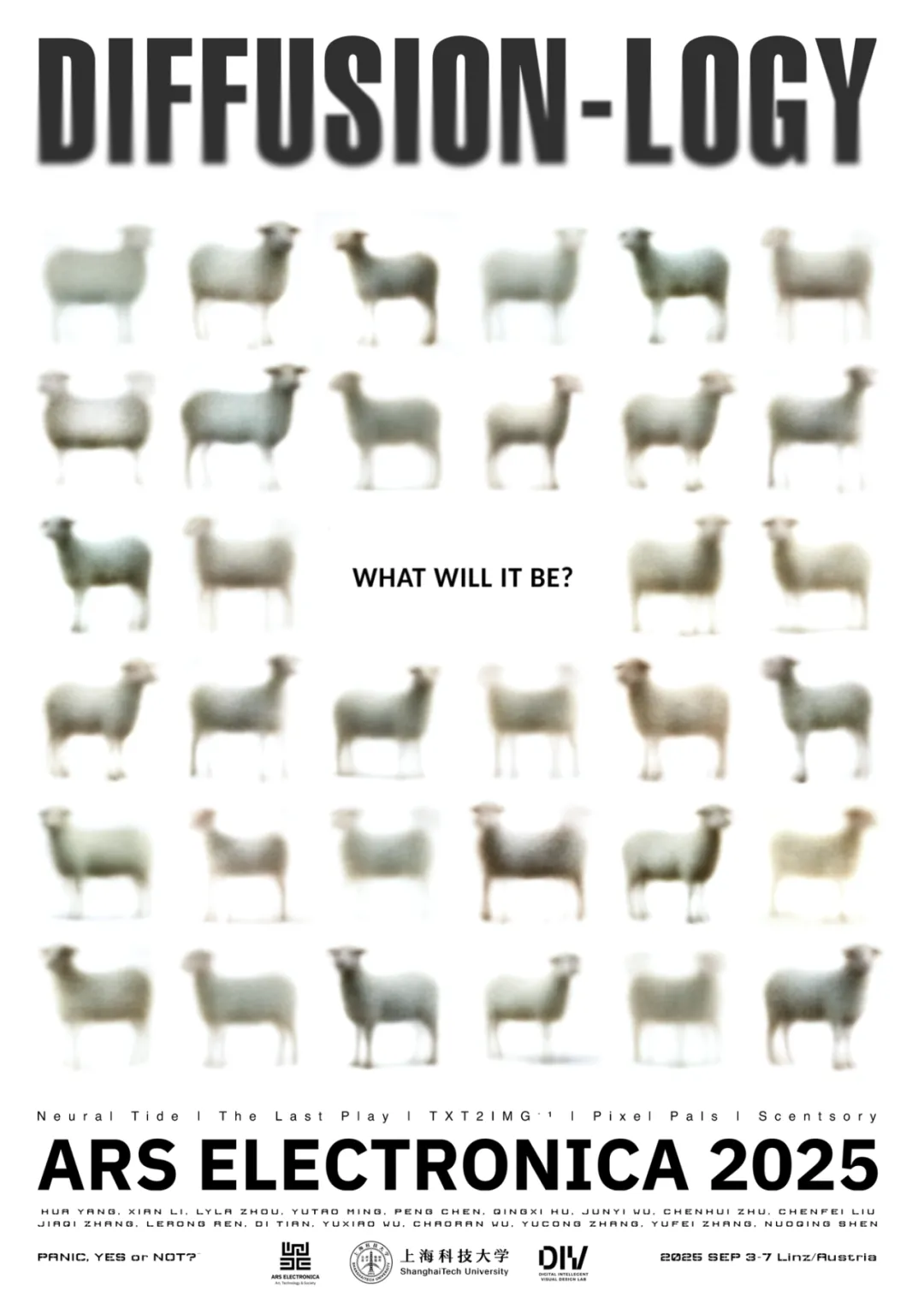
Themed poster DIFFUSION-LOGY.
The project “Pixel Pals” (by Shen Nuoqing, Zhang Yufei) consistently left audiences with a knowing smile through interaction. “Leaving more space for audience reflection, this more open approach made us realize that in the future, we can try adding multi-dimensionality and multi-interpretations at the presentation level. Additionally, when exhibiting in Austria, a non-native English-speaking country, wording should be more concise and straightforward to allow more audiences to understand and participate smoothly,” said Zhang Yufei.
“I felt the growth and breakthroughs of the students on the international stage. The five techno-art works successfully completed their debut exhibition, achieving the set goals of exhibition and exchange, and winning recognition in the integration of technical implementation and conceptual expression. We brought lab ideas into the crowded exhibition space, where many details were amplified in front of the audience,” said lead instructor Li Xian. “The good news is that the works were recognized for their integration of technology and concepts, and more importantly, we now know where to go next.”
Language and accessibility are equally crucial. The project “Scentsory” (by Zhang Jiaqi, Ren Luorong, Tian Di, DIV Lab) uses cross-sensory translation of motion-to-scent, allowing non-English-speaking audiences to enter the narrative through smell. The project “The Last Play” (by Hu Qingxi, Liu Chenfei, Wu Junyi, Zhu Chenhui) uses extended reality technology to pull the abstract “death” back to a tangible distance. Creator Wu Yuxiao of the project “Neural Tide” (by Wu Yuxiao, Wu Chaoran, Zhang Yucong, DIV Lab) candidly said, “Initially, I felt uneasy about the ‘Artist’ badge hanging on my chest, worrying the work wasn’t mature enough or that audiences would be disappointed.” The turning point came during questioning: audiences were willing to spend time experiencing, listening, and discussing the thoughts behind the work. He said, “When I could explain the method clearly, answer questions, and adjust myself, the ‘Artist’ identity truly landed. I started to feel that I could perhaps be called an artist.” Li Xian said, “This reminds us that ‘being understood’ is part of the work itself. Audiences’ face-to-face feedback helps students develop abilities in sensitivity and responsiveness, and gives them a deeper understanding of the value of techno-art in a global context. I believe this will become an important foundation for their future academic research or innovative career paths.”

